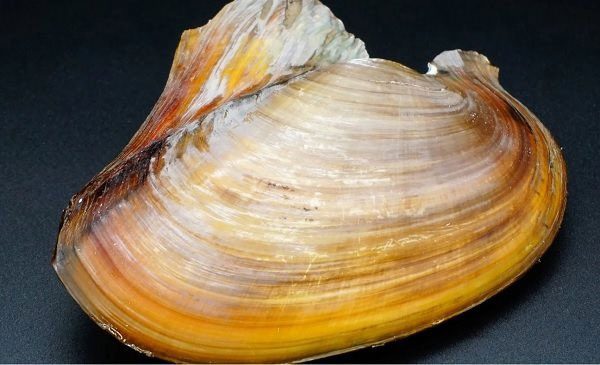According to Popular Science, a team of biologists and materials scientists is studying the pearl oyster to find ways to create materials suitable for smartphones and foldable devices.
The most crucial component of smartphones and foldable devices is the hinge. Repeatedly opening and closing them leads to gradual wear and tear, which necessitates the need for a better joint.
The animal kingdom can provide solutions to improve this issue. The design inspiration comes from bivalve animals like clams, oysters, and mussels, which can open and close hundreds of thousands of times without damage.
A team of biologists and materials scientists is focusing on the thin-shelled oyster (Cristaria plicata). In their research published in the journal Science, they not only deciphered but also replicated the hinge structure that connects the two shell halves using fiberglass and a few other modern materials.

Thin-shelled oyster.
The thin-shelled oyster is found in various freshwater regions across Northeast Asia. Ancient Chinese artisans knew how to use them to create pearls: by opening the shell, inserting a small object like a bead, and then closing it, the oyster secretes nacre that wraps around the object to form a pearl.
For a long time, the nacre layer has attracted the attention of materials scientists. Although it is merely brittle calcium carbonate known as aragonite, the “bricks” of aragonite are tightly bonded together with a “mortar” of protein, giving nacre remarkable strength and resilience.
Biomechanics expert Rachel Crane from the University of California stated that many researchers have attempted to replicate aspects of nacre’s structure to create harder, tougher, and more durable materials. During their study of nacre, some noticed that the hinges also made from aragonite could bend and stretch without breaking.
According to materials scientist Shu-Hong Yu from the University of Science and Technology of China, a member of the thin-shelled oyster research team: “This special ability impressed us greatly. We decided to uncover the fundamental principles behind it.”
Since the early 19th century, scientists have studied hinges, identifying differences among them to classify bivalve animals. However, they lacked the technology to understand the internal structure.
Thanks to microscopy and computers, Yu’s materials science team discovered that the hinge consists of two main components. The core has a fan-like folding structure, with a framework made of a series of aragonite strands wrapped in a soft protein cushion. The second component is an elastic ligament at the outer edge of the core.
When the hinge closes, the protein cushion helps keep the aragonite strands straight, preventing them from bending and breaking. The ligament absorbs tension when the hinge opens. The two components work together to make the hinge extremely robust.
The research team used durability testing machines. The hinge underwent 1.5 million open-close cycles without showing any signs of wear. Inspired by this design, the team developed a hinge with a similar structure but replaced the aragonite strands with fiberglass. Test results indicated that this version is also highly durable.
Materials scientist Yu mentioned that this model is not intended for practical application but is sufficient to demonstrate that humans can create hinges similar to those of the oyster.
- The Three Gorges Dam is about to lose its title as the “King of Dams” to a “new super dam” three times larger
- The only artifact in the world that cannot be forged or replicated, with a mystical quality comparable to that of a “deity”
- The newly launched mini electric car is causing a stir: The size of the VinFast VF 5, with a range of over 560km on a single charge




















































